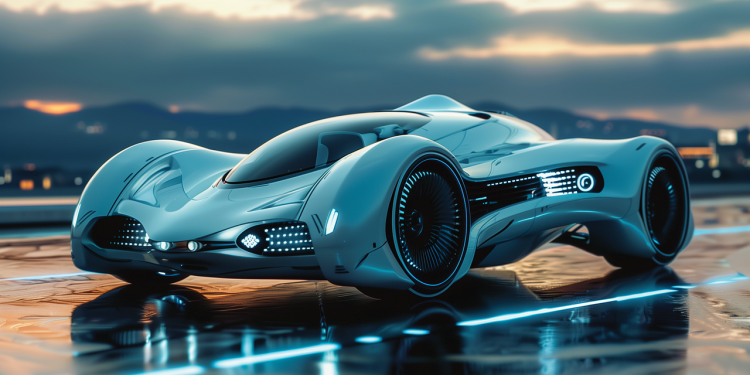The automotive industry is at the forefront of technological change, and with each passing year, new advancements are pushing the boundaries of what cars can do. From self-driving capabilities to advanced safety systems, today’s vehicles are more connected, intelligent, and sustainable than ever. If you’re a car enthusiast or simply someone who wants to know what’s coming next, it’s crucial to keep an eye on the latest automotive tech innovations. In this article, we explore the most exciting developments in automotive technology that are set to change how we drive, how we interact with our cars, and how our vehicles impact the environment.
Autonomous Driving: From Assistance to Full Autonomy
One of the most exciting developments in automotive technology is autonomous driving. While the dream of fully self-driving cars still faces significant technical and regulatory hurdles, we have seen rapid progress in recent years. Many vehicles today offer advanced driver-assistance systems (ADAS) that can make driving safer and more convenient. These systems include lane-keeping assist, adaptive cruise control, and emergency braking, all of which are foundational elements on the road to full autonomy.
Companies like Tesla, Waymo, and even traditional automakers such as GM and Ford are investing heavily in autonomous vehicle technology. Tesla’s Full Self-Driving (FSD) software is perhaps the most well-known, allowing drivers to navigate highways, change lanes, and even park autonomously. Meanwhile, Waymo is pioneering robotaxi services that already offer rides in fully autonomous vehicles in select cities. The dream of cars that can completely drive themselves is closer to reality than ever, but for now, the hybrid model of driver assistance and limited autonomy is where the industry is focusing its efforts.
The transition from ADAS to full Level 5 autonomy—where the car requires no human intervention—is still years away, but the advancements made so far suggest a future where driving becomes less about skill and more about managing technology. In the coming years, we can expect more vehicles to adopt semi-autonomous features, making roadways safer and reducing the stress associated with long drives.
Electric Vehicles: Charging into the Mainstream
Electric vehicles (EVs) have come a long way from being niche products for eco-conscious consumers. The shift toward electric powertrains is one of the most significant trends in the automotive world, driven by the desire for a cleaner, more sustainable future. Automakers are committing billions of dollars to developing electric models, with many pledging to phase out internal combustion engines entirely in the coming decades.
Tesla may have led the way in making EVs popular, but now almost every major manufacturer has joined the fray. Models like the Ford Mustang Mach-E, Volkswagen ID.4, and the electric GMC Hummer are leading the charge into the mainstream market. These vehicles offer impressive ranges, often exceeding 300 miles on a single charge, and incorporate rapid charging technology, allowing drivers to recharge their batteries up to 80% in as little as 30 minutes.
Charging infrastructure is also seeing significant improvements. Companies like ChargePoint, Electrify America, and even major oil corporations are investing in fast-charging stations, making long road trips with electric vehicles more practical than ever before. Advances in battery technology, such as solid-state batteries, promise even better range, faster charging times, and improved safety. As the infrastructure and technology continue to develop, electric vehicles are on the path to becoming the default mode of transportation for the masses.
Connected Cars: The Internet on Wheels
The connected car is another automotive tech innovation transforming the driving experience. Modern cars are now, in many ways, computers on wheels, and they come with the ability to connect to the internet, communicate with other vehicles, and integrate seamlessly with our smartphones. Connected cars use this capability to enhance safety, provide real-time updates, and even offer entertainment options.
A significant innovation in this domain is Vehicle-to-Everything (V2X) communication. This technology allows vehicles to communicate with each other, as well as with traffic lights, road signs, and even pedestrians’ smartphones. V2X communication helps prevent accidents by providing real-time information about upcoming hazards, such as sudden stops by the car ahead or a pedestrian crossing the road unexpectedly. This kind of communication, when combined with advanced AI, helps make roads safer for everyone.
Moreover, over-the-air (OTA) updates have become a game-changer for the automotive industry. Manufacturers can now push software updates to vehicles, much like how smartphones receive updates. This means that performance can be improved, new features can be added, and security vulnerabilities can be patched without the need for a dealership visit. Tesla popularized OTA updates, but other manufacturers like Ford, BMW, and Volkswagen are quickly following suit.
Advanced Driver Safety and Monitoring Systems
Automotive safety has always been a priority, but new technologies are taking it to the next level. The integration of artificial intelligence and advanced sensors has resulted in systems that can monitor both the environment and the driver to enhance safety.
One example is driver monitoring systems (DMS) that use cameras and sensors to detect signs of driver fatigue or distraction. If the system detects that the driver’s attention is waning, it will alert them to take a break or focus back on the road. As cars move toward greater levels of autonomy, keeping the driver engaged and aware becomes crucial, and DMS plays a vital role in this transition.
On the environmental side, we also see more vehicles equipped with predictive safety systems that use radar, cameras, and even LIDAR to predict potential collisions. These systems can automatically apply the brakes, steer away from an obstacle, or warn the driver of impending danger. Features like blind-spot detection, cross-traffic alert, and adaptive headlights help provide an extra layer of safety, significantly reducing the risk of accidents.
Augmented Reality Heads-Up Displays (AR HUDs)
Another fascinating development in automotive technology is the use of augmented reality (AR) in heads-up displays (HUDs). Traditional HUDs project essential information like speed and navigation onto the windshield, allowing drivers to stay informed without taking their eyes off the road. AR HUDs take this concept further by integrating real-time navigation guidance and hazard alerts directly into the driver’s line of sight.
Imagine driving on an unfamiliar road, and instead of looking down at your GPS, arrows are projected directly onto the windshield, guiding you along the correct path. Additionally, AR HUDs can highlight potential hazards, such as a pedestrian about to cross the road or an obstacle hidden in your blind spot. Companies like Mercedes-Benz and Hyundai have already begun incorporating AR HUDs into their vehicles, providing a more immersive and intuitive driving experience.
Artificial Intelligence and Machine Learning in Cars
AI and machine learning are playing an increasingly significant role in the automotive industry. From autonomous driving algorithms to personalized infotainment experiences, AI helps vehicles learn and adapt to their users’ habits and preferences. One notable use of AI is in predictive maintenance—by analyzing sensor data, cars can alert drivers about potential issues before they become serious problems. This not only saves money but also ensures that the vehicle remains safe and reliable.
AI is also transforming in-car assistants. Instead of traditional voice commands that require precise phrasing, new AI-driven systems can understand natural language, context, and even intent. For example, you could tell your car, “I’m cold,” and it would automatically increase the cabin temperature. Such systems can also learn your preferences over time, adjusting the seat, climate, and even music according to your tastes when you get behind the wheel.
Sustainable Materials and Eco-Friendly Design
As the automotive industry moves towards sustainability, innovations aren’t limited to electric powertrains. Automakers are increasingly focusing on using sustainable materials and eco-friendly design principles. Companies like BMW and Volvo are experimenting with replacing traditional leather interiors with high-quality recycled or plant-based materials. Additionally, some manufacturers are designing cars with modular components to make recycling easier and to extend the lifespan of vehicles.
Eco-friendly paints, reduced plastic use, and innovative body materials like carbon fiber composites also contribute to making cars more sustainable. These changes are helping reduce the overall carbon footprint of car production, not just the emissions produced while driving. As consumers become more conscious of their environmental impact, the demand for sustainably produced vehicles is likely to grow, pushing manufacturers to innovate further in this space.
The Future of Mobility: Flying Cars and Hyperloop Systems
While not yet a reality for most of us, the concept of flying cars is gradually moving from science fiction to plausible reality. Companies like Terrafugia and PAL-V are developing vehicles that can operate both on the road and in the air, envisioning a future where commuters can bypass congested roadways by taking to the skies. Though it will likely be several years before flying cars become mainstream, these prototypes highlight the forward-thinking nature of today’s automotive innovations.
Similarly, developments in Hyperloop technology—high-speed transportation systems using vacuum tubes—could transform long-distance travel. Though not a car-based technology per se, the Hyperloop shares a vision of efficient, sustainable, and rapid transportation, aiming to drastically cut travel times between cities.
Solar Integration: Harnessing the Power of the Sun
Another exciting trend is the integration of solar panels into vehicles. While solar power alone is not yet enough to run a car entirely, automakers are exploring how solar panels can be used to extend range and improve efficiency. For instance, the Hyundai Sonata Hybrid and Lightyear One integrate solar panels to charge the battery, providing additional power and reducing the reliance on charging stations or fuel. Solar roofs and hoods might not be a complete solution, but they represent another step towards more sustainable and energy-efficient cars.
3D Printing and Customization
3D printing is revolutionizing how car components are manufactured, allowing for greater customization and faster prototyping. Companies can now create custom parts that are lightweight yet incredibly strong, improving vehicle performance and efficiency. This technology also allows manufacturers to produce limited runs of unique parts, giving customers more options to personalize their vehicles. As 3D printing becomes more cost-effective, it could significantly reduce production costs and lead times, while enabling a higher degree of customization for consumers.
Conclusion
With each passing year, the automotive industry surprises us with technologies that redefine our relationship with vehicles. From the growing capabilities of autonomous systems to breakthroughs in electric mobility and sustainability, the innovations discussed above represent just the beginning of what is to come. As technology continues to evolve, cars will become safer, smarter, and greener—reshaping not only how we drive but also how we live. The future of automotive technology is undeniably thrilling, and staying informed about these innovations will help us all better understand the changing landscape of personal mobility.






